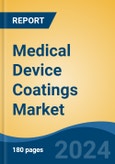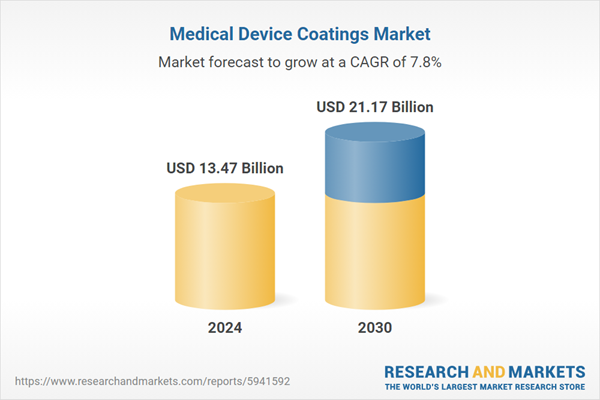Antimicrobial Coatings is the fastest growing segment, Asia-Pacific is the largest regional market
Speak directly to the analyst to clarify any post sales queries you may have.
10% Free customizationThis report comes with 10% free customization, enabling you to add data that meets your specific business needs.
Key Market Drivers
The escalating global prevalence of chronic diseases stands as a primary driver for the medical device coatings market. Conditions such as cardiovascular diseases necessitate advanced interventions, with coatings essential for enhancing device biocompatibility and extending functional longevity. According to the British Heart Foundation, in 2023, approximately 620 million individuals globally were living with heart and circulatory diseases, illustrating the extensive demand for coated medical devices. Simultaneously, the intensifying focus on infection control and patient safety profoundly impacts market growth. Healthcare-associated infections remain a substantial concern, driving the need for advanced antimicrobial and lubricious coatings. These surface treatments mitigate bacterial adhesion and reduce insertion friction, thereby improving patient outcomes and device efficacy.Key Market Challenges
A significant impediment to the growth of the Global Medical Device Coatings Market is the substantial investment necessary for developing innovative coating materials and their application techniques. This encompasses the extensive financial resources and time required for initial research, rigorous preclinical testing, and subsequent clinical validation. Concurrently, navigating complex and evolving regulatory approval processes further escalates overall project costs and often delays crucial market entry for novel coating solutions.Key Market Trends
The proliferation of antimicrobial surface solutions is a significant trend in the global medical device coatings market, propelled by the continuous need to mitigate healthcare-associated infections. This involves integrating advanced antimicrobial technologies directly into medical devices, moving beyond traditional sterilization. The medical technology sector sustained a global average research and development investment rate of approximately 8% of sales in 2023, according to MedTech Europe, showcasing commitment to product enhancement. This investment fuels novel coating formulations.Key Market Players Profiled:
- SurModics Inc.
- Sono-Tek Corp.
- Koninklijke DSM N.V.
- Hydromer, Inc.
- Covalon Technologies Inc.
- Infinita Biotech Private Ltd.
- Materion Corp.
Report Scope:
In this report, the Global Medical Device Coatings Market has been segmented into the following categories:By Product:
- Hydrophilic Coatings
- Antimicrobial Coatings
- Drug Eluting Coatings
- Anti-Thrombogenic Coatings
- Others
By Application:
- Neurology
- Orthopaedics
- General Surgery
- Cardiovascular
- Dentistry
- Gynaecology
- Others
By Region:
- North America
- Europe
- Asia-Pacific
- South America
- Middle East & Africa
Competitive Landscape
Company Profiles: Detailed analysis of the major companies present in the Global Medical Device Coatings Market.Available Customizations:
With the given market data, the publisher offers customizations according to a company's specific needs. The following customization options are available for the report.Company Information
- Detailed analysis and profiling of additional market players (up to five).
This product will be delivered within 1-3 business days.
Table of Contents
Companies Mentioned
The companies profiled in this Medical Device Coatings market report include:- SurModics Inc.
- Sono-Tek Corp.
- Koninklijke DSM N.V.
- Hydromer, Inc.
- Covalon Technologies Inc.
- Infinita Biotech Private Ltd.
- Materion Corp.
Table Information
| Report Attribute | Details |
|---|---|
| No. of Pages | 185 |
| Published | November 2025 |
| Forecast Period | 2024 - 2030 |
| Estimated Market Value ( USD | $ 13.47 Billion |
| Forecasted Market Value ( USD | $ 21.17 Billion |
| Compound Annual Growth Rate | 7.8% |
| Regions Covered | Global |
| No. of Companies Mentioned | 8 |









